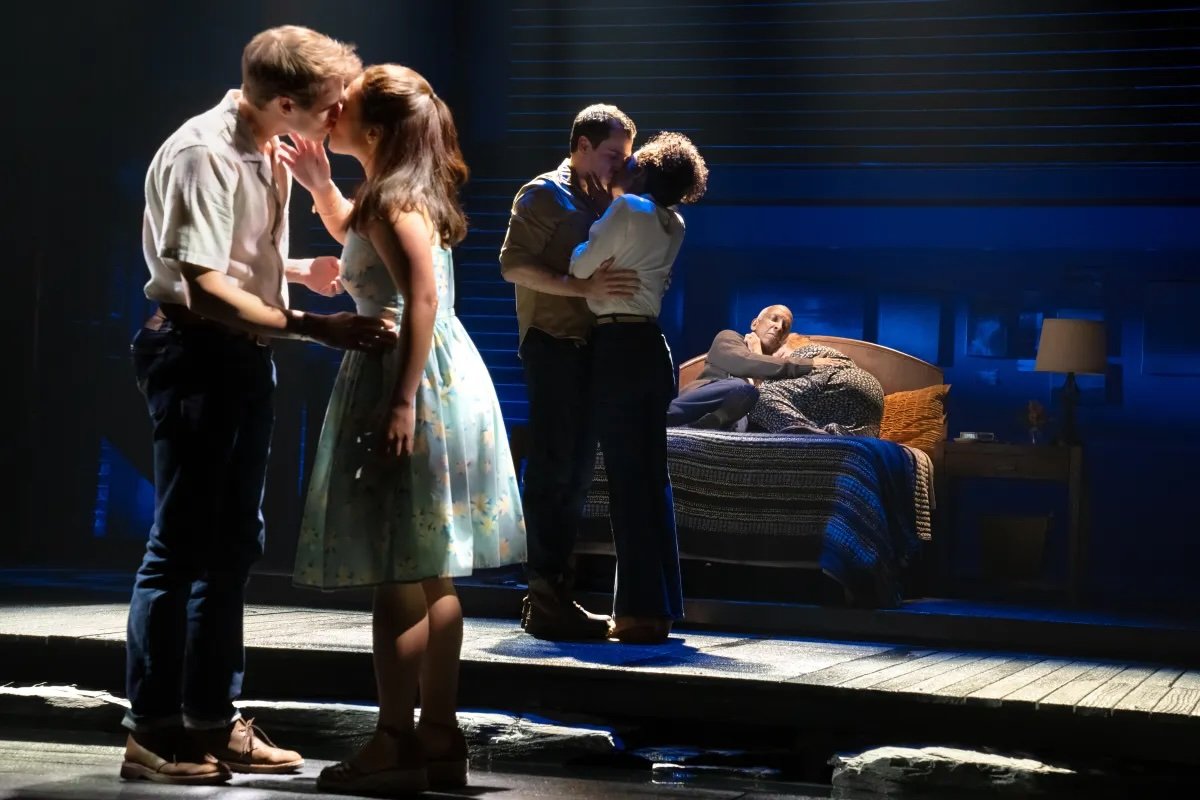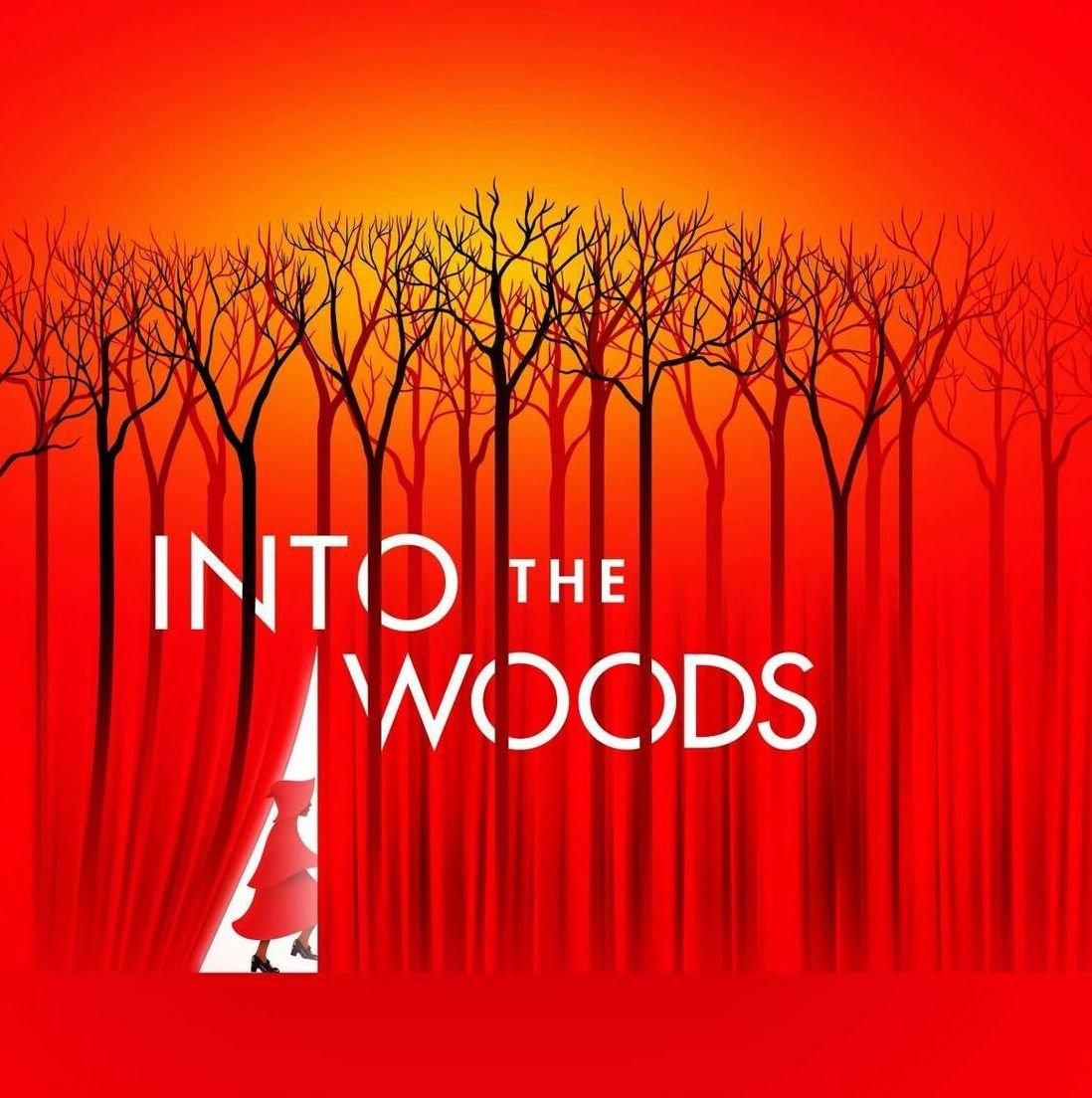It is worth acknowledging from the jump what many of you, my dear and indulging friends, suspect: my expectations for a Broadway adaptation of The Notebook (a movie I do not particularly like) with music from Ingrid Michaelson (a singer-songwriter whose work I do not particularly enjoy) were not, well, they weren’t particularly high. I was mostly interested in seeing it to celebrate a former collaborator, Jordan Tyson, who’s making her Broadway debut as Younger Allie.
When my parents announced they were coming to town, I knew just the show to recommend. Everything about the idea of a Broadway adaptation of The Notebook that caused me to approach it with eyebrow arched also makes it ideal My Parents Are Coming to the City material. And it is. The Notebook is indeed perfect fodder for the MPACttC crowd. That’s a backhanded compliment in many cases, but The Notebook also happens to be good.
I was more or less instantly charmed. Given the cast, I should have known. It’s hard to watch Dorian Harewood and not be charmed. Harewood, who plays Older Noah, and Maryann Plunkett (Older Allie) are both great actors, and it is a joy to watch them. The contemporary portions of The Notebook are set in the nursing home where Older Allie receives live-in care for advanced Alzheimer’s. Plunkett is remarkable, and exhausting to watch. I mean that as a compliment. I don’t know how she gives that performance eight times a week. It must be physically exhausting. Her Tony nomination is richly deserved.
I assume you know the story. So does the show, come to think of it. There are no attempts to couch anything in a twist, no reveals that a lesser adaptation might try to milk. We find things out as they happen. Perfect. Older Noah reads to Older Allie, his wife, from a mysterious notebook. We “learn” after a little while that the contents of the notebook are their story. I remember that being a bit more of a reveal in the movie version, but here the staging makes that more or less apparent from the start. Again, that’s fine. The Notebook isn’t interested in hiding that from you. The ultimate revelation about the notebook—if you know, you know—still hits, and it hits like a fucking truck.
The most interesting and inspired choice The Notebook makes is dividing both Allie and Noah into three flavors: Younger, Middle, and Older. Prior to seeing the show, I assumed that was a concession born out of practicality. I thought the show might jump back and forth too frequently to allow for aging or de-aging, whether through makeup or quick changes. Instead, the leads in triplicate are part of the conceptual fabric. Even if the idea started as a matter of practicality, the creative team has turned it into an inspired choice. The three eras don’t interact with one another, by which I mean they do not speak to one another, but they do create echoes. The various ages sing together, and spend much of the show on stage simultaneously.
Directors Michael Greif and Schele Williams make smart, tasteful use of the conceit. They never lean on it. This is a shockingly unsentimental show given what it could have been. One of my favorite moments, which comes during the absolutely tear-drenched finale—I have cried that hard in a theater only twice before—is when the Allies and Noahs kiss. The Olders are towards the back, the Middles in the middle, and the Youngers are right out front. It passed quickly, a moment content to be only an instant (treat the moment present as a present for the moment, indeed) and everyone goes their separate ways in the staging. That idea, that we are all of the versions of ourselves at any one moment, that to love someone is to love who you have been together and who you are and who you will be, it’s beautiful. I’m tearing up now thinking about it. The Notebook didn’t need to be this thoughtful.
I also have nothing but compliments for the book, which is sharp, funny, and expedient (Bekah Brunstetter earned that Tony nomination). The songs are where The Notebook struggles most. Individually, they are enjoyable, but as a score, they smear together. None of them make an impression, even if none of them offend. They are too similar. Joy Woods, who is phenomenal as Middle Allie, singlehandedly turns “My Days” into a great 11 o’clock number, but that was the only time I found myself getting lost in the music. The odd lyric jumps out here and there—Older Allie’s “I am in love with all of the things I forget” is wondrous—but there’s little to grab onto. With a better score, The Notebook might have a chance at entering the pantheon. I’m sure it will do just fine in any case.
One final thought before I go. In The Notebook, we get to see Harewood and Plunkett do something we don’t often get to see great older actors do: be people who are old. That phrasing is intentionally belabored. They aren’t playing Old People. Older Allie and Older Noah aren’t sagacious grandparents. Nor are they there to reflect on the younger characters around them. Though it would have assuredly wrecked me, The Notebook features nothing like Light in the Piazza’s “Let’s Walk,” a song about the passage of time framed around the behavior of The Kids These Days, and that’s as it should be. Allie and Noah are the narrative, in all three eras we see depicted. The Notebook gives equal time and weight and dignity to their experiences near the end of their lives as it does to those nearer the beginning. Older Noah’s flirtation with Older Allie is given the same energy as Younger with Younger. That is a kindness we do not normally see afforded in popular entertainment. I looked over at one point to notice my parents quietly holding hands. Who knows what memories they were sharing in that moment.


